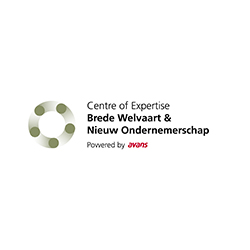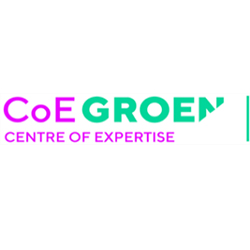Rationale: It is well established that resting energy expenditure (REE) decreases with age. Data derived from indirect calorimetry (IC) are still limited with respect to the number of high aged individuals, BMI groups and health conditions. Therefore, IC generated REE of the BASAROT sample and those calculated according to the Harris-Benedict (HB) equation were used to re-evaluate the proposed association between REE and age. Methods: The IC-BASAROT sample combines the result of IC performed in 2622 individuals from 10 centers (7 Germany, 2 Italy, 1 Netherlands) done under strictly standardized conditions (e.g. at least 8h of fasting) in free-living, mostly healthy adults aged 18 to 100 years including all BMI ranges. IC was performed by canopy technique (Cosmed Quark RMR/Sensor Medics Vmax29) in 96.5% of cases and by face mask (Cosmed Fitmate) in 3.5%. Weight was measured by calibrated scales and height was determined to the nearest of 1mm. Results: REE in the total sample (BMI: 26.9±9.1 kg/m², 43.7±17.6 y) correlated more positively with body weight than with BMI (r=0.768; p<0.001 vs. r=0.571; p<0.001). Gender+body weight explained 75% of REE variance, gender+BMI 69% and gender+age only 28%. To reduce confounding by body weight we performed age-related analysis in the subgroup of women weighing 50-79 kg (n=780, BMI: 23.4±3.4 kg/m², 41.4±18.5 y) and men weighing 60-89 kg (n=500, BMI: 24.9±3.0 kg/m², 47.5±19.3 y) and compared results with REEHB (tab. 1). IC results from 18 to 100 y showed an approximately 50% lower decrease in REE than HB in women (-129 kcal/d vs. - 257 kcal/d) and in men (-200 kcal/d vs. -406 kcal/d, tab. 1). REEIC (n=1280) did not correlate with age (r=-0.042; p=0.132). In line, we observed a significant overestimation of REE by HB up to 39 y in both sexes and an underestimation in men 60 y of age and older. Conclusion: Age-related decline in REE appears to be lower than expected and might due to changes in body composition both in the younger and older generation. No indication of the often proposed systematic overestimation of HB in women was seen. Overall, findings should be considered in future models for estimating REE.
LINK
Wat heeft het netwerk van makers, mee-makers en mogelijk-makers uit Drenthe, Friesland en Groningen nodig om verder te gaan met bijzondere initiatieven op het gebied van kunst en ouder worden? Zorg Innovatie Forum (ZIF) zette in oltober 2018 een online enquête uit. Projectleider Saskia van de Ree maakte ter afsluiting van vier jaar Innovatiewerkplaats Healthy Ageing & de Kunsten deze analyse.
DOCUMENT

Study designCross-sectional study.ObjectivesThe aims of this study were (1) to validate the two recently developed SCI-specific REE equations; (2) to develop new prediction equations to predict REE in a general population with SCI.SettingUniversity, the Netherlands.MethodsForty-eight community-dwelling men and women with SCI were recruited (age: 18–75 years, time since injury: ≥12 months). Body composition was measured by dual-energy X-ray absorptiometry (DXA), single-frequency bioelectrical impedance analysis (SF-BIA) and skinfold thickness. REE was measured by indirect calorimetry. Personal and lesion characteristics were collected. SCI-specific REE equations by Chun et al. [1] and by Nightingale and Gorgey [2] were validated. New equations for predicting REE were developed using multivariate regression analysis.ResultsPrediction equations by Chun et al. [1] and by Nightingale and Gorgey [2] significantly underestimated REE (Chun et al.: −11%; Nightingale and Gorgey: −11%). New equations were developed for predicting REE in the general population of people with SCI using FFM measured by SF-BIA and Goosey-Tolfrey et al. skinfold equation (R2 = 0.45–0.47; SEE = 200 kcal/day). The new equations showed proportional bias (p < 0.001) and wide limits of agreement (LoA, ±23%).ConclusionsPrediction equations by Chun et al. [1] and by Nightingale and Gorgey [2] significantly underestimated REE and showed large individual variations in a general population with SCI. The newly developed REE equations showed proportional bias and a wide LoA (±23%) which limit the predictive power and accuracy to predict REE in the general population with SCI. Alternative methods for measuring REE need to be investigated.
DOCUMENT
MUSE supports the CIVITAS Community to increase its impact on urban mobility policy making and advance it to a higher level of knowledge, exchange, and sustainability.As the current Coordination and Support Action for the CIVITAS Initiative, MUSE primarily engages in support activities to boost the impact of CIVITAS Community activities on sustainable urban mobility policy. Its main objectives are to:- Act as a destination for knowledge developed by the CIVITAS Community over the past twenty years.- Expand and strengthen relationships between cities and stakeholders at all levels.- Support the enrichment of the wider urban mobility community by providing learning opportunities.Through these goals, the CIVITAS Initiative strives to support the mobility and transport goals of the European Commission, and in turn those in the European Green Deal.Breda University of Applied Sciences is the task leader of Task 7.3: Exploitation of the Mobility Educational Network and Task 7.4: Mobility Powered by Youth Facilitation.
Mensen die moeite hebben met lezen en schrijven (laaggeletterden) zijn ondervertegenwoordigd in onderzoek, waardoor een belangrijke onderzoekspopulatie ontbreekt. Dit is een probleem, omdat zorgbeleid dan onvoldoende op hun behoeften wordt aangepast. Laaggeletterden hebben vaak een lage sociaal economische positie (SEP). Mensen met een lage SEP leven gemiddeld 4 jaar korter en 15 jaar in minder goed ervaren gezondheid vergeleken met mensen met een hoge SEP. Om laaggeletterden te betrekken in onderzoek, is het o.a. nodig om onderzoek toegankelijker te maken. Dit project draagt hieraan bij door de ontwikkeling van een toolbox voor toegankelijke (proefpersonen)informatie (pif) en toestemmingsverklaringen. We ontwikkelen in co-creatie met de doelgroep toegankelijke audiovisuele materialen die breed ingezet kunnen worden door (gezondheids)onderzoekers van (zorggerelateerde) instanties/bedrijven én kennisinstellingen voor de werving voor en informatieverstrekking over onderzoek. In de multidisciplinaire samenwerking met onze partners YURR.studio, Pharos, Stichting ABC, Stichting Crowdience, de HAN-Sterkplaats en de Academische Werkplaats Sterker op eigen benen (AW-SOEB) van Radboudumc stellen we de behoeften van de doelgroep centraal. Middels creatieve sessies en gebruikerservaringen wordt in een iteratief ontwerpende onderzoeksaanpak toegewerkt naar diverse ontwerpen van informatiebrieven en toestemmingsverklaringen, waarbij de visuele communicatie dragend is. Het ontwikkelproces biedt kennisontwikkeling en hands-on praktijkvoorbeelden voor designers en grafisch vormgevers in het toegankelijk maken van informatie. Als laaggeletterden beter bereikt worden d.m.v. de pif-toolbox, kunnen de inzichten van deze groep worden meegenomen. Dit zorgt voor een minder scheef beeld in onderzoek, waardoor (gezondheids)beleid zich beter kan richten op kwetsbare doelgroepen. Hiermee wordt een bijdrage geleverd aan het verkleinen van gezondheidsverschillen.
De alliantie tussen professionals en cliënten in de jeugdzorg is een krachtige algemeen werkzame factor in de hulp aan kinderen en ouders met opvoedproblemen. De alliantie tussen professionals en cliënten bestaat uit de persoonlijke klik, overeenstemming over de doelen waaraan gewerkt wordt en de wijze waarop er samengewerkt wordt aan die doelen. Een positieve alliantie in een vroeg stadium van het hulpverleningstraject is een betrouwbare voorspeller van een positieve uitkomst. Het vroegtijdig zicht krijgen op de kwaliteit van de alliantie geeft de mogelijkheid om breuken en deuken in beeld te brengen en vroegtijdig bespreekbaar te maken en te herstellen. Het ritueel om de alliantie bespreekbaar te maken wordt in de praktijk nog weinig gestalte gegeven. Het vergt van professionals een scherp observatievermogen, goede reflectievaardigheden en de nodige creativiteit om het ritueel in het primair proces te passen. Met de te ontwikkelen experimentele leerlijn waar deze aanvraag op ingaat willen werkveldpartners inzetten op het aanleren van deze vaardigheden.
Centre of Expertise, part of Avans Hogeschool

Centre of Expertise, part of Hogeschool Van Hall Larenstein, HAS green academy, Aeres Hogeschool
